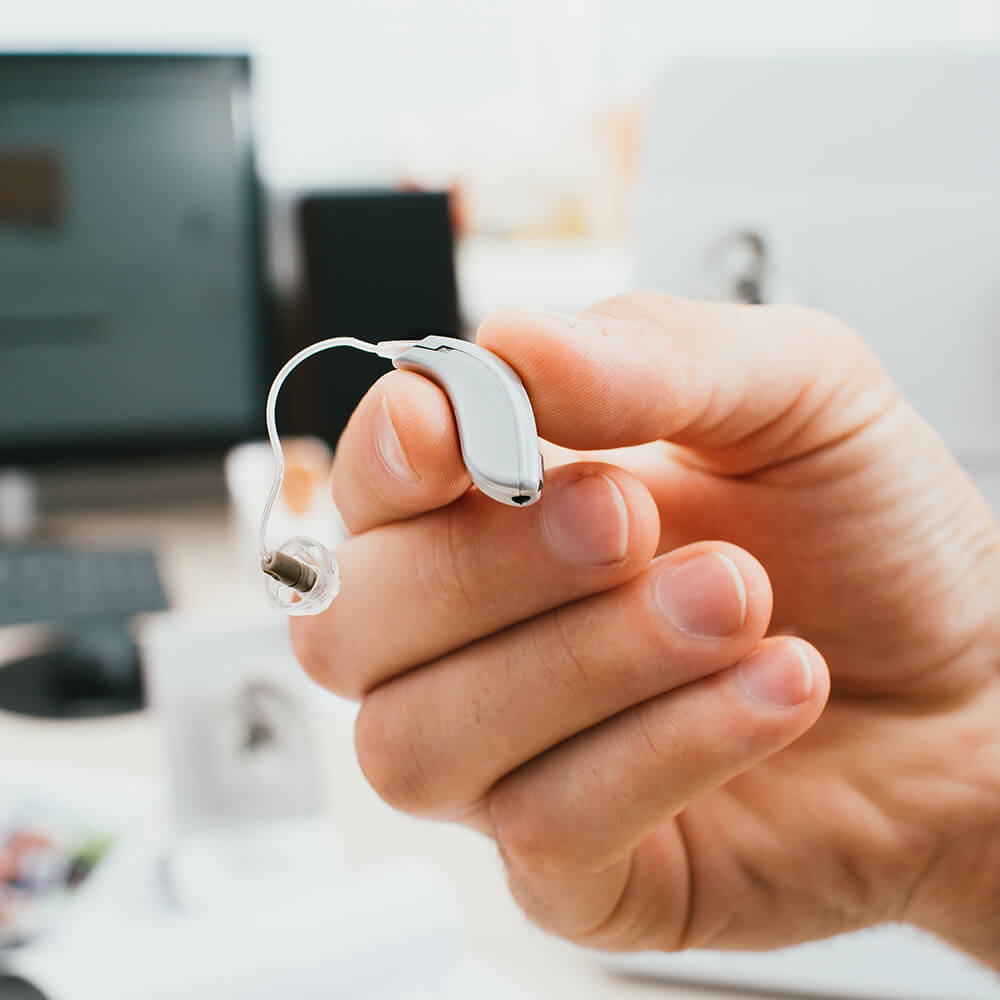Hearing Aid Overview
A hearing aid helps amplify the frequencies of sound lost when an individual has hearing loss. You should know that hearing aids are not able to 'cure' your hearing loss. But they can help in no small extent with speech understanding and hearing all the sounds you encounter daily.
Types of hearing aid
Invisible-in-the-canal (IIC)
This tailored style is put further into the ear canal than other models, so it is almost invisible when worn. To ensure good ear health, the IIC hearing aids are designed to be removed regularly. They are tailored for the ears and can be used with a mild to moderate hearing loss.
Completely-in-the-canal (CIC)
As with the IICs, these fit into your ear canal directly. Just a small part of the hearing aid is in view, and the design is more concealed than most other types of hearing aid. They are useful for keeping you discreet, and for those with an active lifestyle, they are perfect. These custom hearing aids can also be conveniently put under helmets or headbands. Precise amplification is provided by CIC instruments, with practically no wind interference.
In-the-Canal (ITC)
ITC hearing aids are fit into the bowl of the outer ear. They can handle a broader range of hearing losses and have a longer battery life than the IIC and CIC models. Their size allows other features, such as directional microphones, to be added to manage difficult noise conditions better. They also include manual controls that help people with limited dexterity.
In-the-Ear (ITE)
These aids are adapted to fit the ear canal and outer ear. The styles vary from half covers filling half of the outer ear bowl to full covers, filling almost the entire outer ear bowl. They are wide enough to contain more features, such as directional microphones and manual controls, and are ideal for people with dexterity issues.
Receiver-in-Canal (RIC)
One of the most popular types for first-time hearing aid users, the RIC is an open-fit hearing aid that features a thin plastic cord with a speaker. This speaker is placed inside the ear canal. Since the sound produced travels a very short distance, it requires less battery power than a regular BTE hearing aid.
Behind-The-Ear (BTE)
These are among the most common forms of hearing aids. They are built with most of the electronic elements in a case that sits behind the ear. A thin tube of plastic and an ear hook relay the sound to the earpiece. The tube lies outside the ear canal, sending sound to the eardrum. The user's voice sounds more normal while they're talking, and during eating and drinking, it's not as noisy. BTE hearing aids also have the potential to carry the most features and house the most powerful batteries.
Hearing Aid Features
Rechargeable batteries
The preferred technology has long been lithium-ion rechargeable batteries in many different industries, and this breakthrough is finally available for hearing aids.
Lithium-ion batteries have enough capacity to stream content over hours, compared with traditional battery technology, and can still last the whole day. The cells will last up to 5 years and can be charged as fast as your smartphone, making them appealing to any hearing aid user.
Bluetooth technology
Bluetooth hearing aids have been around for a while, but you always needed an extra intermediary device to take advantage of. This changed with the arrival of 'Made for iPhone and 'Made for any phone' hearing aids. These new hearing aids can connect directly to your laptop, TV, and smartphone. Now you can use your smartphone to enjoy streaming content through hearing aids, from watching the latest shows to catching up on your favorite podcasts.

Adjusting to Hearing Aids
When you first use hearing aids, the brain needs time to get used to the sound signals re-experiencing after such a long period of absence.
After years of distortion caused by hearing loss, it can be challenging to re-acclimate the brain to daily life sounds. Over time, the ability to do this will improve, as the actual sounds of daily life are reintroduced into the mind after years of not being heard. It will get more comfortable when you continue using hearing aids daily.
We understand that there is still progress to hear better after the initial fitting of the hearing aid. It takes time, practice, and regular wear to adapt to your new hearing aids. We will provide you with the resources designed to help you re-adapt to the sounds around you. It won't be easy, but we're here for you during every inch of the process.

